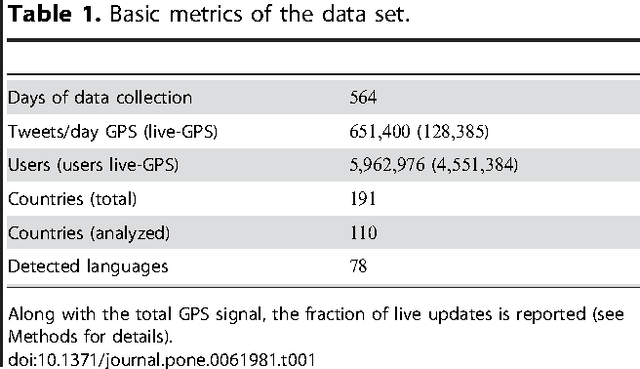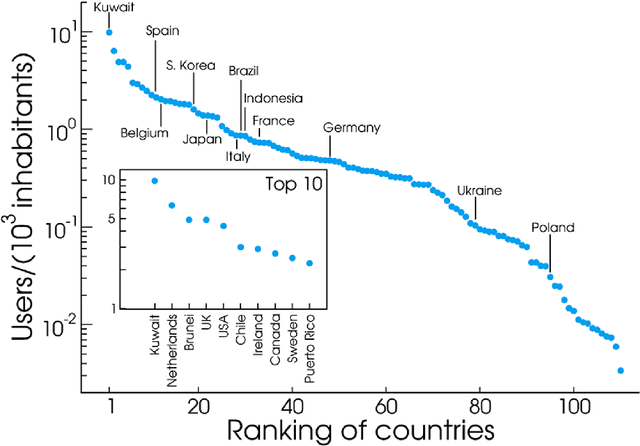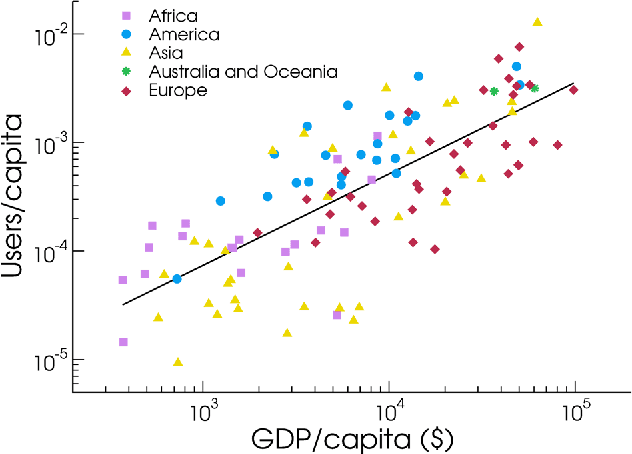Delia Mocanu
The Twitter of Babel: Mapping World Languages through Microblogging Platforms
Dec 20, 2012



Abstract:Large scale analysis and statistics of socio-technical systems that just a few short years ago would have required the use of consistent economic and human resources can nowadays be conveniently performed by mining the enormous amount of digital data produced by human activities. Although a characterization of several aspects of our societies is emerging from the data revolution, a number of questions concerning the reliability and the biases inherent to the big data "proxies" of social life are still open. Here, we survey worldwide linguistic indicators and trends through the analysis of a large-scale dataset of microblogging posts. We show that available data allow for the study of language geography at scales ranging from country-level aggregation to specific city neighborhoods. The high resolution and coverage of the data allows us to investigate different indicators such as the linguistic homogeneity of different countries, the touristic seasonal patterns within countries and the geographical distribution of different languages in multilingual regions. This work highlights the potential of geolocalized studies of open data sources to improve current analysis and develop indicators for major social phenomena in specific communities.
 Add to Chrome
Add to Chrome Add to Firefox
Add to Firefox Add to Edge
Add to Edge